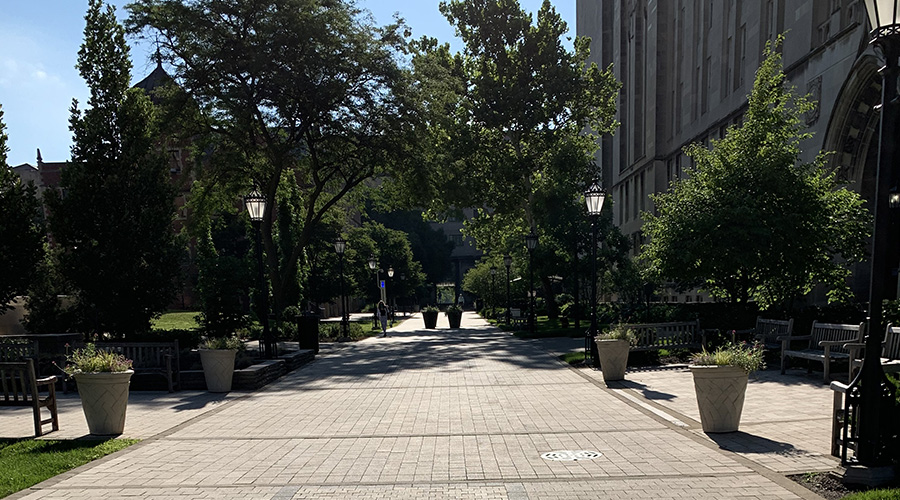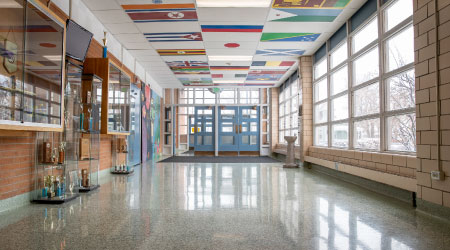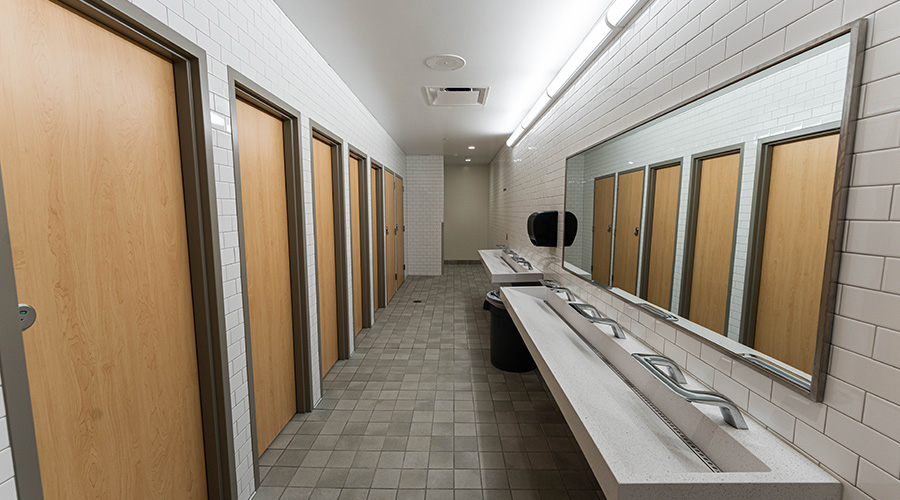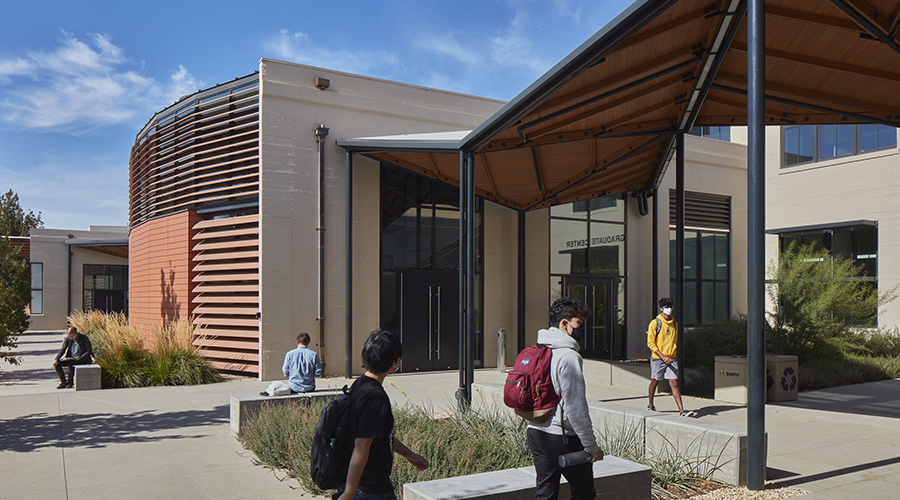Shootings Call For New Security, Response Plans on Campus
On April 16, 2007, a Virginia Tech senior killed 32 people and injured 17 more before killing himself. Less than a year later, a former graduate student at Northern Illinois University killed five students before turning the gun on himself. In the aftermath of the shootings — the latest in a line of incidents on campus in the last decade — many colleges and universities have asked themselves how they would respond if the unthinkable occurs on their campuses.
Few people are willing to criticize decisions made by those in charge following an emergency or disaster. But hindsight is 20/20, and there are always lessons that can be gleaned by studying what decisions were made, when they were made and why they were made. Ideally, those lessons prevent tragedies from occurring again or, at a minimum, improve the outcome of those events.
Virginia Tech in particular was a big wake-up call for universities to review their emergency management plans, says William Elvey, director for facilities management at the University of Texas at Dallas and president of APPA, the association for educational facilities managers. Elvey was assistant vice president for facilities at Virginia Tech when the shootings occurred. Many universities didn’t include in their plans the scenario that happened at Virginia Tech, or even at Columbine High School, but that began changing following those incidents, he says.
“We had weather-related events, chemical spills and other events, but we didn’t have the scenarios that would include a tragic situation like at Virginia Tech,” Elvey says. “If most universities are smart, they’re looking at emergency response plans and including an ‘all-situation plan’ into their plans. One message that I would urge all facility managers to remember is that they should never become complacent and think it won’t happen there because if it can happen in Blacksburg, Va., it can happen anywhere.”
Security often takes a backseat to other issues until there’s a tragedy, and then it quickly gets bumped to the top of the to-do list, says Paul Benne, senior security specialist with Syska Hennessy Group Inc. An incident such as a shooting at one school almost instantaneously leads other schools in the area to go to a higher level of security, such as locking all doors that are accessible from the outside, because it’s the only thing administrators know how to do quickly, he says.
Practicing the Plan
Having an emergency response plan and practicing that plan are two lessons learned from Virginia Tech and NIU. One big lesson Elvey says he took away from Virginia Tech, and one that the University of Texas at Dallas is following through on, is having a plan and practicing it on a regular basis. Also, the administration needs to cooperate and support that strategy, with everyone knowing their roles and responsibilities so that things go more smoothly if an event actually occurs, Elvey says.
Several times a year the University of Florida campus police department practices drills that assume a gunman is on campus, a drill that the school started before the incident at Virginia Tech, says Steve Orlando, associate director of the University of Florida News Bureau in Gainesville. In one such drill during a spring break, the police used the school’s basketball arena and practiced responding to a gunman killing people and taking hostages, he says.
University administrators and others have the “luxury of a calendar” before a crisis occurs but once it does, that calendar becomes a stopwatch, says James Satterfield, president and co-founder of Firestorm Solutions, which dispatched employees to Virginia Tech following the shootings. Planning and training are key because once something happens, everyone involved goes into reaction mode, he says.
Satterfield says that what’s learned in the first 24 hours following an incident is generally wrong, meaning decisions are being made based on faulty information. This is why planning and practicing are particularly crucial. “It’s the difference between information and intelligence,” he says. “You don’t have all the facts, but you’re forced to make timely decisions, and that’s where you need a plan. As facts become known, the situation evolves, and how you monitor, understand, communicate and act make a big difference.”
Satterfield says that Virginia Tech administrators and safety personnel first thought that they had a domestic situation on their hands because of what they initially found and were told. But as more information was gathered and the shootings continued on another part of campus, they realized that they were wrong and that the situation was much worse.
Communication Is Paramount
Another lesson learned from Virginia Tech and NIU is the importance of having quick, effective communication with students, faculty, staff and visitors. Many schools typically communicate through an e-mail, voice mail or text message notification system, where a single message is blasted to everyone who has registered for the service.
A particularly dangerous 2004-2005 hurricane season led the University of Florida to begin using text messaging for campus closings. The school created a one-click system to send messages quickly, Orlando says. The university requires students to give the school their emergency contact information, including a cell phone number so that they can receive a text message.
“You need to keep up with what your audience wants and needs,” Orlando says. “What technology are they using this week? E-mail is gone and texting is here. We’re thinking about a social networking page, like Facebook or MySpace. Don’t succumb to the pressure of sales people or well-meaning parents or others who say you need to have such-and-such a system right now. Make sure you have what’s most appropriate for your school and situation.”
The University of Nebraska purchased a message notification system following the Virginia Tech shootings, and a meeting was recently held to discuss how to get more students to register for the service, says Ted Weidner, assistant vice chancellor of facilities management and planning at the University of Nebraska in Lincoln. A quarter of the school’s students have registered, which Weidner says is better than the 20 percent national average. However, the university wants a 100 percent participation rate. Schools that approach that percentage have students sign up as part of the academic registration process, something that the University of Nebraska isn’t yet prepared to do, Weidner says.
About a year ago the University of Florida began implementing a reverse 9-1-1 telephone system. Instead of someone calling the service to report an emergency, the service calls individuals with a notification. The school is also installing an intercom system. “We looked at a lot of different options and instituted the ones that worked for us,” Orlando says.
Other means of communication include placing loudspeakers throughout a campus, having so-called zipper signs inside and outside of buildings, and having a two-way intercom system that would allow someone to speak to individuals in a classroom and allow those in the classroom to respond verbally. However, no system is perfect and, like the University of Florida, schools need to evaluate what’s best for their situations. “If you’re in an urban setting with an announcement blaring, people in the city hear it and then who does the announcement mean something to?” University of Nebraska’s Weidner says.
Security Measures
Universities also should take a hard look at the security measures they have and those they might need, another lesson learned from Virginia Tech and NIU. Weidner says that after the NIU shootings, his first thought was how many side doors the University of Nebraska has to lecture hall stages and if university personnel know whether those doors are locked. To address the former, the school removed all exterior hardware on doors leading to lecture hall stages. The school is working on the latter, and currently people can exit those doors but not enter unless a person on the lecture hall stage opens the door.
The school has already changed its building design guidelines so that doors can’t have chains put on them, Weidner says, adding that retrofitting existing doors is expensive. New buildings will also have card access systems and cameras, and that work that will be done on existing buildings as they’re renovated.
Placing cameras throughout a campus is another option, which would allow university personnel to see, and possibly videotape, movements of anyone within the camera’s field of view, Firestorm’s Satterfield says. There are also computer-assisted design programs in 3-D that can map how many people are in a room, he adds.
Too many university and security personnel are looking around and saying that they don’t need all the available technology to have a secure campus, but that’s being short-sighted, says Robert Lang, assistant vice president for strategic security and safety at Kennesaw State University in suburban Atlanta. “Our position is that communication has always been the weak link to every situation — terrorist, man made, natural — and people get hurt or killed because of a lack of or poor communication,” he says. “We need to alert people and utilize every technology that’s out there.”
Balancing Act
One challenge in securing a campus is finding the cash to pay for products and services. Retrofitting existing buildings is more expensive than outfitting new buildings with the needed systems. The intercom system at the University of Florida, for example, will cost several million dollars and although the school will receive a state grant to help pay the bill, Orlando says it’s unclear how much grant money will make it to Gainesville. “Our top priority is student safety because we’re entrusted with taking care of children regardless of age, and we take that very seriously,” he says. “It’s tempting to spend as much money as it takes, but we have to weigh what makes sense with what doesn’t.”
Some companies will offer to give a school a text message system in return for the right to send students advertisements, says William Sako, chairman of Sako & Associates Inc. and senior vice president of Rolf Jensen & Associates Inc. But students get frustrated by the spam and shut off the service, defeating the purpose of having the service. Text message services need to be free and spamming shouldn’t be allowed, Sako says.
Giving alumni the option to donate money that’s specifically earmarked for security is one way to address the financial strain, Satterfield says. Another, Syska’s Benne says, is to charge a $2 to $3 per semester credit hour fee to fund additional security measures. “It’s done in places like concert venues, where you’re assessed a 5 to 10 cents surcharge per ticket for the security operation,” he says.
Another challenge, and perhaps the trickiest, is balancing security with having an open campus, which includes the issue of individual privacy and how much access university officials have to a person’s mental health records. University officials probably can’t close a campus, but they can have better control by, for example, putting card access on all doors, says Paul Timm, president of RETA Security Inc., and a member of the educational institutions committee for the American Society for Industrial Security. He says that all individuals on campus should have to sign in, no matter who they are or where they’re going, and all faculty and staff members should wear identification cards, adding that none of the measures “closes” a campus.
Security and Openness
The University of Nebraska uses a rings-of-security approach that tries to strike a balance between security and openness, Weidner says. For example, card access is required in dangerous and sensitive research areas. That access begins at the entrance door and then extends to the lobby, elevators, stairs and lab doors. “It would be nice to push that to the end of campus and do periodic background checks on people, but we live in an open society and it’s even more open in an academic setting,” he says. “It’s an institution that demands inclusiveness.”
The shootings at Virginia Tech and NIU likely would have occurred no matter how much security they had because they involved dealing with individuals and that means dealing with societal problems, Sako says. Colleges need to do a better job of helping the students who need that aid, he says, adding that it’s a “sad commentary” on society that it can’t help individuals who need it, even when they don’t want the help.
Related Topics:













